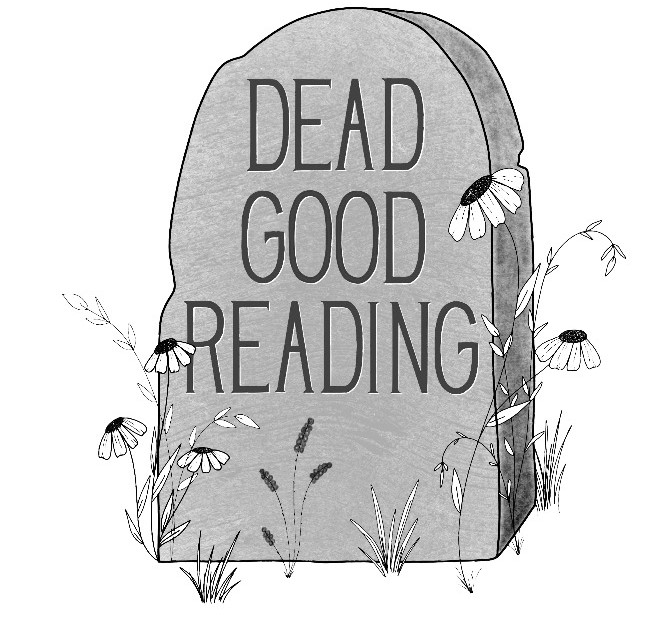This will be a problem many book lovers have, but despite having plenty to read, I sometimes find it hard to choose my next book. To solve this ‘problem’, I recently shared a photo with selected titles on Twitter, to ask the public which book they would pick. Overwhelmingly, the vote went to Mary Roach’s Stiff: the curious lives of human cadavers. Originally written in 2004, but my copy is a 2021 reprint. After reading this fascinating, sometimes nauseating, yet always thought-provoking book, I am not surprised that, as can be read on the front cover, over a million copies have sold.
The topic of cadavers, corpses or dead bodies could be heavy and technical, however Roach’s writing is accessible and offers plenty of comic relief. For example, Roach notes that she is considering donating her brain to the Brain Bank at Harvard university just to be able to say that she is ‘going to Harvard’.
“The way I see it, being dead is not terribly far off from being on a cruise ship. Most of your time is spent lying on your back. The brain has shut down. The flesh begins to soften. Nothing much new happens, and nothing is expected of you””
— Mary Roach, Stiff (2019 [2004], page 9)
Prior to reading this book, I did not know cadavers historically have had so many uses. Cadavers have been used as human crash test dummies, in ballistic research to research the impact of bullets at different distances. Dead bodies have been part of art exhibitions. As it has been 18 years since the book was originally published, there might even be a plethora of other uses in contemporary times.
At the original time of writing, Roach attended a training for plastic surgeons, who practiced face lifts on dead human heads that had been separated from the rest of the body, and were placed in roasting pans. This usage was the one that made me the most uncomfortable as it purpose is cosmetic surgery and not necessarily the enhancement of medicine. Yet, this says a lot about me and my feelings towards elective cosmetic surgery, and I guess they have to practice on something.
Perhaps a better known example of the use of human cadavers is in the anatomy lab at universities. People who donate their body to science, might end up being very useful to medical students learning about the body and its functions. Students are assigned a cadaver, and spent a lot of time studying the parts of a dead body. As the identity of the deceased is unknown to them, they often end up naming the cadaver. It was Stiff that set anatomy technician Gina Bond on her current path. In her recent interview for The Death Studies Podcast, Gina Bond talks about body donation, and that not everyone who donates their body will end up in an anatomy lab, and the memorial services held at the University of Sheffield. As Roach notes in the 2021 epilogue of the book; whilst memorial services for donated bodies were rare occasions in 2004, they have become the norm. For anyone interested in the embalming process of cadavers used in anatomy labs, and the realities of working as an anatomy technician, I strongly recommend listening to this episode!
The boundaries between life and death are sometimes blurry. This is particularly evident in the case of organ donations: a person needs to be considered ‘dead’ whilst simultaneously still being ‘alive’ , in order to be able to ‘harvest’ organs for donation. The notion of brain death and the emergence of organ donation have drastically altered the definition of death.
Reading Stiff in 2022 also shows the rapid development of technologies and how our lives have drastically changed since 2004. There were no smartphones when Roach researched her book. There was no Google translate to help her communicate with people speaking foreign languages. In one chapter, Roach investigates cannibalism and tries to corroborate a story that dumplings in a particular place in China sometimes contain human meat. Trying to find out whether a funeral home delivered cadavers to restaurants, Roach went on an interesting goose chase. With the help of an interpreter Roach set to find out whether the story is true.
“In the cab, I tried to think of a way to explain to Sandy what I was about to have her do. I need you to ask this man whether he had an employee who cut the butt cheeks of cadavers to serve in his brother’s restaurant. No matter how I thought of phrasing it, it sounded ghastly and absurd. Why would I need to know this?”
Marry Roach- Stiff, (2019[2004], page 243).
Roach did not find anyone who confirmed the story of dumplings filled with butt cheeks, but it still makes for a really interesting chapter and moral question: why wouldn’t we eat human meat? Is it wasteful to not use it?
Stiff will offer readers the opportunity to think about what usage of human cadavers they find appropriate, and which they might find absurd, unethical or just odd. It also offers a great opportunity to reflect on what to envision your post-mortem ‘life’. Do you want to be donated to science? Do you want to be an organ donor? Can your body be used in an arts project? Would you mind being used as a crash-test dummy? If yes, why? If no, why not? These are important things to think about. I will leave you with these wise words from Roach:
“Death. It doesn’t have to be boring”
— Mary Roach, Stiff (2019 [2004], page 11)
To learn more about Mary Roach and all the other books she has written visit her website.


Leave a Reply